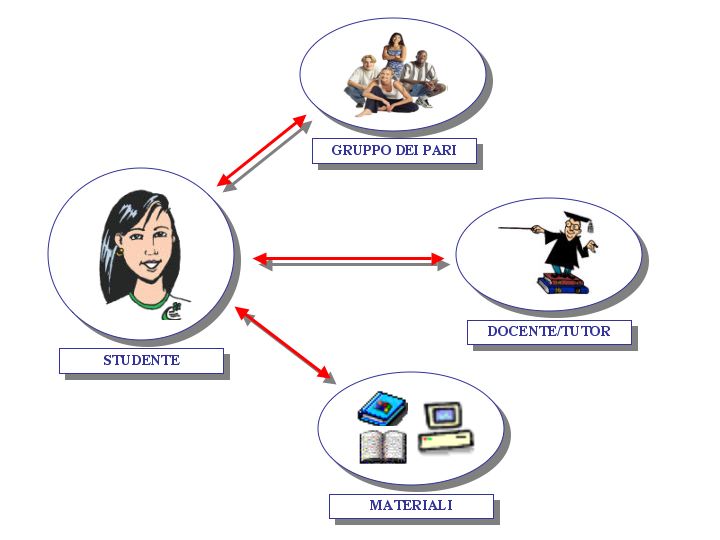Sharing free/open LOs [2 db ROSSZ LINK]
The critical element
E-LEARNING MATERIALS:
THE CRITICAL ELEMENT
|
A teacher who plans an eLearning project takes into consideration the following factors at the beginning:
Starting from this information, and from the learning model chosen, he/she plans and develops:
|
DIDACTIC MATERIALS
& E-LEARNING MODELS
|
Self-learning |
|
In on-line training models which are focused on self learning, didactic material must be highly structured and accomplish all the tasks carried out by the teacher: the transmission of content, sustained motivation, controlled learning, feedback, etc. |
|
Virtual class |
|
In models which are based on a virtual class, where there is a relationship between a teacher and with a peer group, the didatic materials do not have an all-embracing role because the teacher and the group intervene directly to maintain motivation, to control learning and to offer feedback with new content. The importance of the pre-defined didactic material is reduced, however the didactic material must be specifically designed to be used online. |
DIDACTIC MATERIAL: THE CRITICAL POINT
Most teachers have become acquainted with ICT, and many of them have already carried out eLearning activities with their students. However many cannot go beyond these few and limited experiences because of the lack of time to develop suitable learning materials.
In the field of software, nowadays, a different perspective has become dominant: the one of Free Software and Open Source, with copyleft rights.


